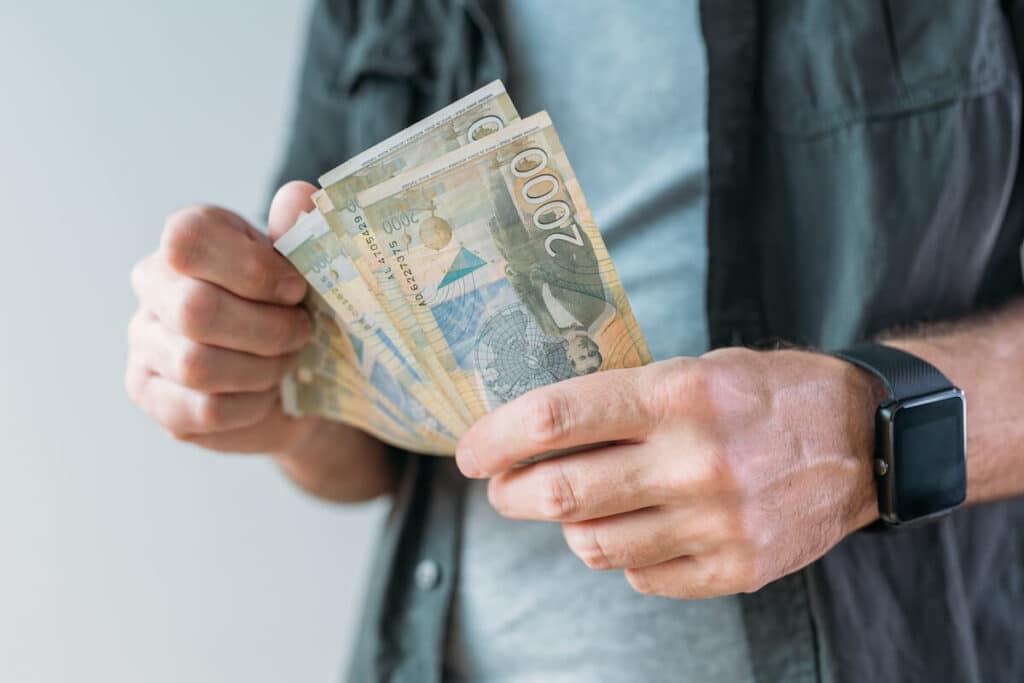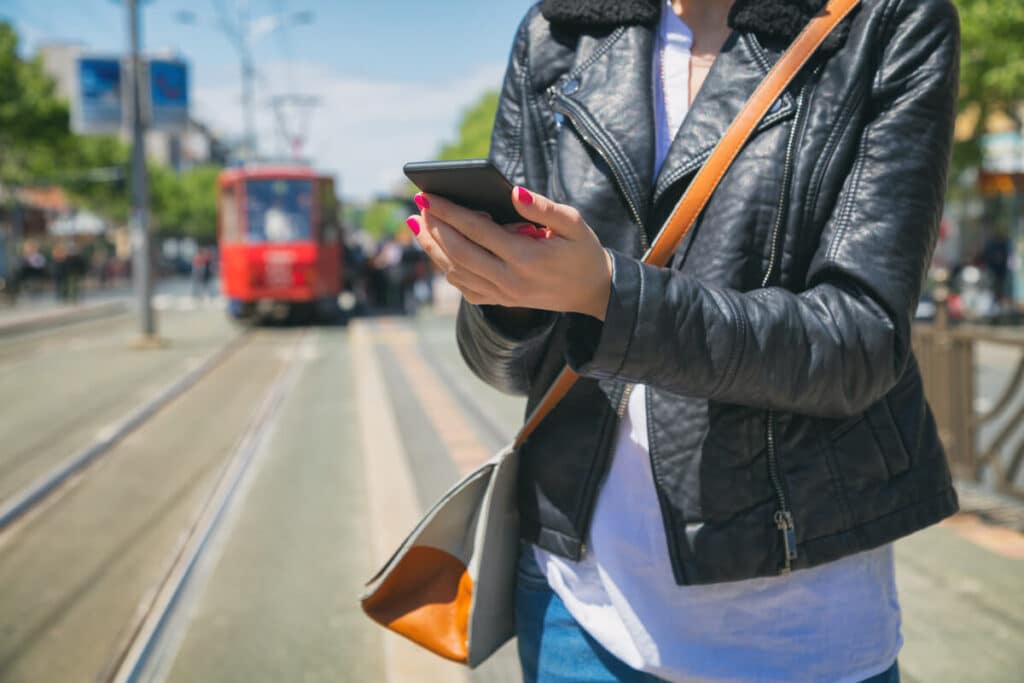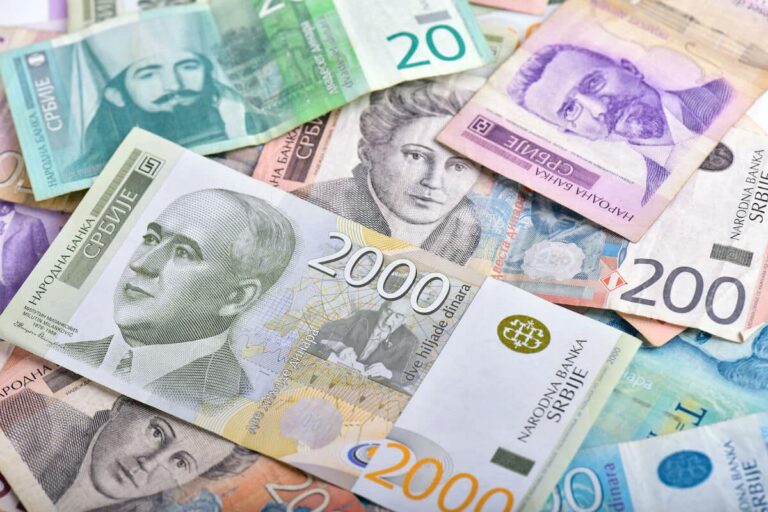Serbia is a country in Southeastern Europe on the Balkan Peninsula. It isn’t part of the European Union, and it uses its own currency, the Serbian dinar. Serbia’s currency has a long and fascinating history and is one of the oldest currencies in the world.
If you’re planning to live in Serbia or travel there, you’ll want to get familiar with Serbia’s currency, including its denominations, design, and exchange rate.
Here’s our handy guide to the Serbian dinar, including some tips on how to get the best exchange rate when traveling or transferring money overseas.
The history of Serbia currency
The story of the Serbian dinar starts in 1214—at least, that’s the first time it shows up in the history books. During the Middle Ages, Serbia was famous for its silver mines, and it used this silver to mint coins inspired by a Venetian coin called the grosso.
Many of these early coins featured religious imagery, and they became so famous that Italian writer Dante Alighieri even mentions them in The Inferno.
This period was brief, however, and the Ottoman Empire soon conquered Serbia, ruling from the 1400s to the 1800s. The Ottomans minted coins in Belgrade, Novo Brdo, and other parts of Serbia, including a Turkish coin called the “para.”
After Serbia became an independent state in 1817, Serbian rulers struggled to keep track of all of the foreign coins in circulation. Finally, in the 1860s and 1870s, Serbia rolled out a series of coins and banknotes of its own, using the “dinar” as its unit of currency and “para” for its subdivisions.
This first issue lasted until World War I, when Serbia became part of Yugoslavia and switched to the Yugoslav dinar.
Serbia currency denominations
Today, the dinar is the official currency of Serbia. Although there are still technically 100 para to each dinar, the National Bank of Serbia no longer issues this subunit. All coins and banknotes come in “dinar” units only.
Dinar banknotes are available in the following denominations:
- 10
- 20
- 50
- 100
- 200
- 500
- 1,000
- 2,000
- 5,000
Dinar coins come in these five denominations:
- 1
- 2
- 5
- 10
- 20
The Serbian dinar uses the currency code RSD (for Republic of Serbia dinar) and the currency symbol DIN. (That’s дин in Cyrillic). The plural of dinar is dinari or dinars.
If you can’t read Cyrillic script, that’s OK. Serbia’s currency uses Arabic numerals, and the text appears in both Latin and Cyrillic.
6 essential facts about Serbia currency
Before heading to Serbia, it’s worth taking some time to appreciate Serbia’s currency. Not only will you learn about some key historical figures, you’ll also better understand Serbia’s relationship with the rest of the world.
Here are six key facts about Serbia’s currency to help you get started:
1. Serbia isn’t the only country to use the dinar.
Although Serbia’s currency is only used in Serbia, several other countries also call their currency the “dinar.” As of this writing, these countries are:
Croatia also used the dinar before switching to the kuna in 1994 and adopting the euro (EUR) in 2023. Montenegro used the Yugoslav dinar until 1999, when it switched to the German Deutsche Mark, followed by the euro.
2. The dinar was initially pegged to the franc.
Shortly after introducing the dinar, Serbia joined the Latin Monetary Union—a precursor to the Eurozone that aimed to make all of its member currencies interchangeable with one another. During this time, the Serbian dinar was pegged to the French franc, and the two currencies had the same value from 1873 to 1894.
3. Serbia briefly used the Yugoslav dinar and krone.
From 1920 to 2003, Serbia was part of the unified country of Yugoslavia and then the Union of Serbia and Montenegro.
For most of this time, it used the Yugoslav dinar (also called the Yugoslav krone). This dinar went through many issues and revaluations, including the hard dinar, convertible dinar, and reformed dinar.
The central bank re-introduced the Serbian dinar in 2003.
4. Serbia issued a new dinar during World War II.
During World War II, Serbia’s currency went through another upheaval. Although it was using the Yugoslav dinar at the time, its German occupiers issued a new dinar pegged to the Reichsmark. From 1941 to 1944, 1 Reichsmark was worth 250 dinars.
5. One banknote features inventor Nikola Tesla.
Dinar banknotes feature major historical and cultural figures, such as composer Stevan Stojanović Mokranjac and painter Nadežda Petrović.
You’ll also find inventor Nikola Tesla, who became famous for his work in the U.S., but was ethnically Serbian. Both Serbia and Croatia honor him on their currency because the area he grew up in is now part of Croatia.
6. You can’t use Serbian currency in Kosovo.
The Republic of Kosovo is a “partially recognized state” that has a complicated history with Serbia. If you’re traveling to Kosovo, you’ll want to exchange your dinars for euros (EUR). Kosovo has been using the euro as its de-facto national currency since 2002.
Understanding and using Serbia currency

Serbia’s currency features colorful designs and famous faces, so even people who are new to the country should have little trouble telling its various denominations apart. But how easy is it to exchange money in Serbia, and do you need to carry cash?
Serbia has a modern economy, and many retailers accept international credit cards and debit cards. You’ll also find plenty of ATMs in Belgrade and other major cities. Still, it’s worth carrying some cash for taxis, small purchases, and tipping.
If you use ATMs or credit cards, remember that your bank or credit card issuer might charge a fee for international purchases.
Serbian currency exchange rate
If you’re wondering where to exchange currency in Serbia, that depends on where you are. Serbian currency can be hard to get outside the country, so you may need to wait until you arrive to exchange your money for dinars.
Some Serbian banks may only exchange major currencies like the British pound (GBP), euro (EUR), and the U.S. dollar (USD), so consider exchanging your money into one of these currencies before you arrive.
Other currencies, like the Australian dollar (AUD) and Canadian dollar (CAD), may be harder to exchange or may result in a less favorable exchange rate.
You can look up the current exchange rate between the Serbian dinar and your home currency using an online currency converter.
If you don’t want to carry or exchange large amounts of cash, traveler’s checks and international money transfers are also an option.
Whatever you do, don’t exchange money on the street; it’s against Serbian law. All money changers need a license from the National Bank of Serbia.
Send money overseas the easy way

Cash may still be king in Serbia, but credit cards and digital wallets are gaining steam. Using a mobile app like Remitly to transfer money can take the hassle out of sending money overseas. You can fund your transfer with a debit or credit card, and track it every step of the way via SMS or email notifications.
Whether you need to send money to friends and family, or to your own international bank account, Remitly makes it easy to send Serbian currency overseas. We offer transparent transfer fees and a competitive exchange rate.
Over 5 million people have used Remitly to send money internationally. Download the app today to start your first transfer!
